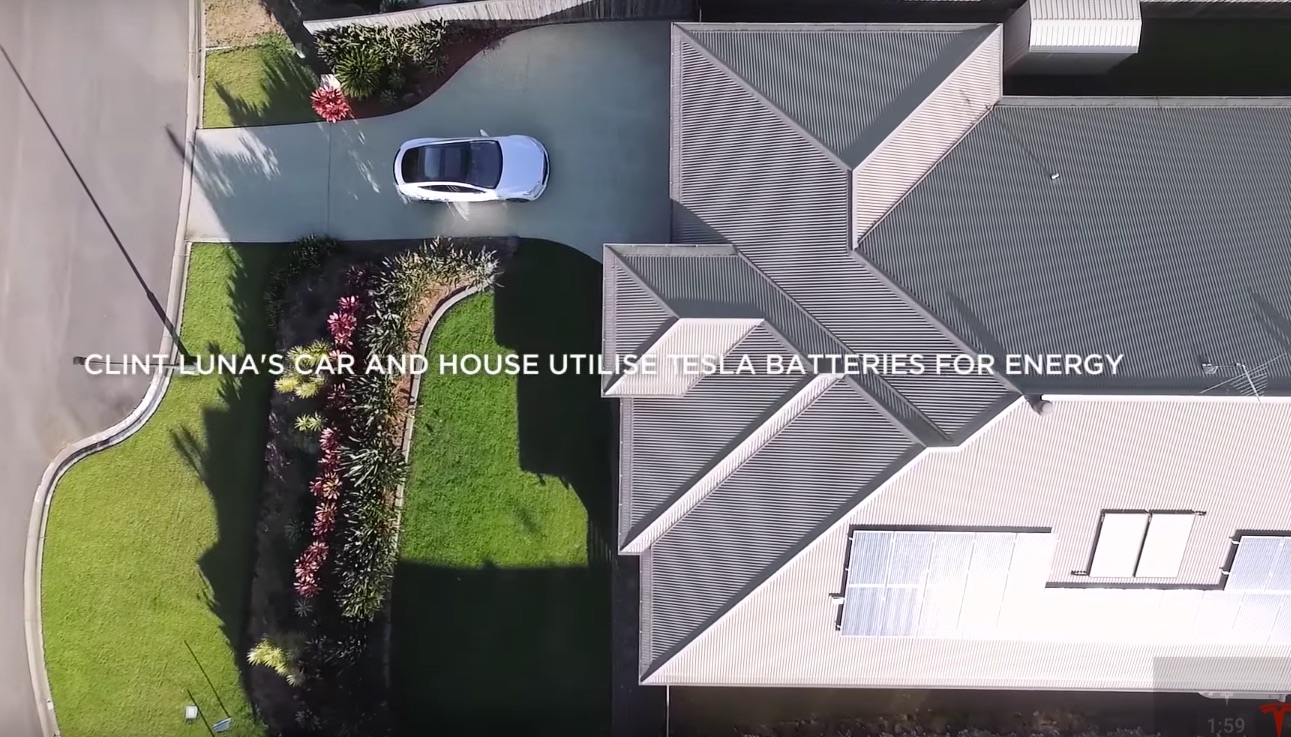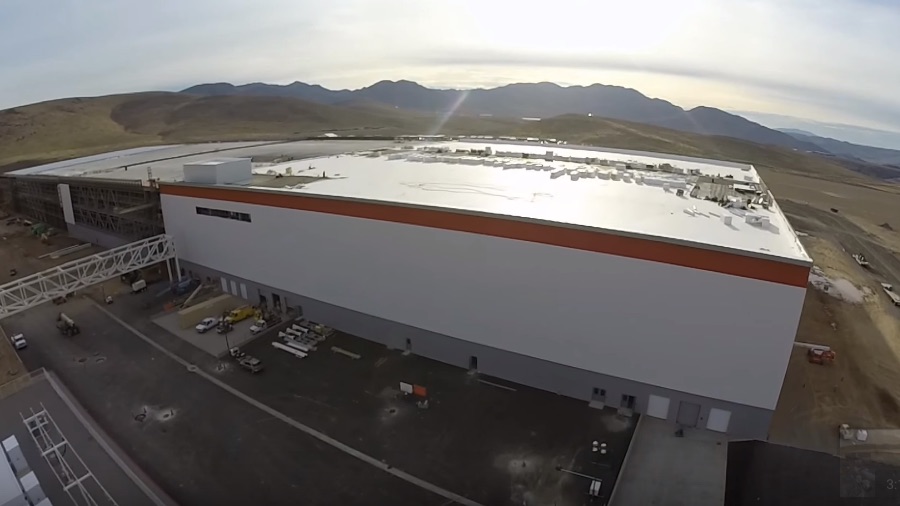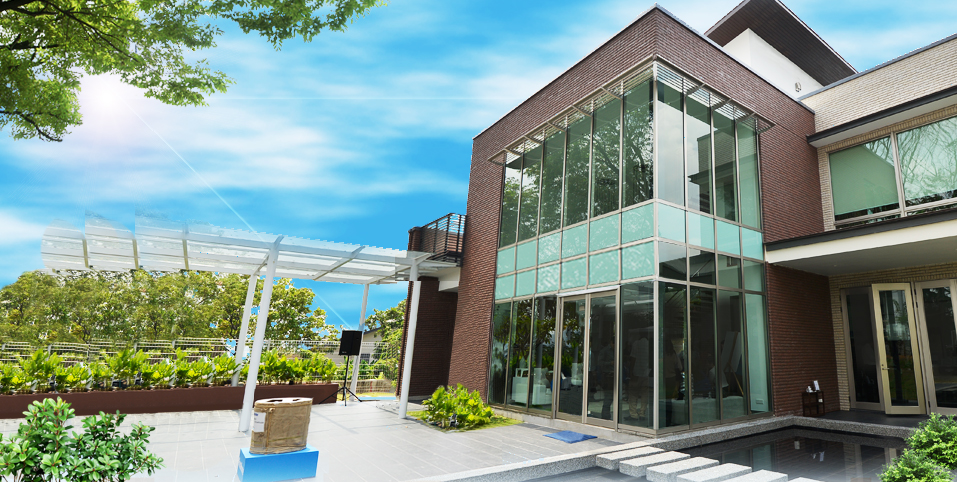Investor's Corner
Deeper Tesla, Panasonic ties could lead to a Smart Home future

A growing partnership between Tesla and Panasonic on solar cell production and storage batteries may one day eliminate residential reliance on the power grid and provide the capacity to recharge electric cars each night. However, to secure this collaboration on solar cell and module production, Tesla’s proposed SolarCity acquisition must first be approved by shareholders on November 17, 2016.
In the meantime, Tesla and Panasonic have entered into a non-binding letter of intent under which they will begin collaborating on the manufacturing and production of photovoltaic (PV) cells and modules in Buffalo, New York. The Buffalo facility will become the largest solar panel factory in North America, with expectations to employ 1,460 workers and produce up to 10,000 panels per day.
A blog post on Tesla’s website acknowledged that the continued partnership with Panasonic is an important step in creating fully-integrated energy products for businesses, homeowners, and utilities and furthers Tesla’s mission toward a sustainable energy future.
The Relationship between Tesla and Panasonic
The October 16, 2016 announcement confirmed that this newest collaboration extends the established relationship between Tesla and Panasonic, which includes the production of electric vehicle and grid storage battery cells at Tesla’s Gigafactory outside Sparks, Nevada. The $5 billion Gigafactory will produce batteries for the Model 3 electric car and energy storage products for home and utilities.
“We expect that the collaboration talks will lead to growth of the Tesla and Panasonic relationship,” said Shuuji Okayama, vice president of Panasonic’s Eco Solutions unit.
Battery cell production will begin by late 2016 and is expected to reach full capacity by 2018, producing more lithium ion batteries annually than were produced worldwide in 2013. In cooperation with Panasonic and other strategic partners, the Gigafactory will produce batteries that have the capacity to drive down the per kilowatt hour (kWh) cost of a battery pack by more than 30 percent. That anticipated cost drop is crucial, as current battery costs are untenable.
Panasonic plans to begin PV cell and module production at the Buffalo facility in 2017, and Tesla intends to provide a long-term purchase commitment for those cells from Panasonic. The Tesla/ Panasonic collaboration could mean that energy from solar panels will be pumped into home storage batteries. No longer would residential home solar systems follow the traditional model of selling back to utilities.
Panasonic’s Future Home
The proposed Tesla/ Panasonic collaboration would shift Panasonic’s historic focus from consumer electronics products and onto housing, automotive information systems, and vehicle batteries, which “would be a win” for Panasonic, according to Bloomberg. Panasonic’s transition to the home electric market began in 2009 with its Tokyo Future Home, which features the latest environmental technologies and a few prototypes. The house is designed to aid natural ventilation and cut down on air conditioning. The walls of the house are lined with a thin and efficient insulator that cuts down on heating and cooling costs. LED lights, which use much less power than incandescent bulbs and last longer than current fluorescent models, are sensor-controlled. Extra generated electricity is stored in a prototype accumulator battery of lithium ion cells for later use. The lights, power, heating, and other apps are controlled in a high-tech in-house network with living room TV at the center.
The aim of Panasonic’s energy-saving house is to be carbon neutral in energy usage.
Tesla’s Smart House Could Utilize Panasonic’s Technology
Tesla is currently developing advanced systems that adapt to the needs of the environment with the goal is to bring top quality affordable systems that provide energy efficiency, quality of life, and home security.
Already, smart home system are able to cut electric energy spending by 50%, or in some cases go off-grid using Tesla batteries combined with solar. Lights, air conditioning, and all other appliances are automatically managed, turning on and off, depending on the time of day, temperature, motion sensors, door and window detectors, and electricity rates. Fingerprint scanner and pin lock, video surveillance, night vision camera, motion sensors, SMS alarms, fire and flood sensors are accessed through a phone.
In 2014, Panasonic opened a smart city near Tokyo that is designed to drastically cut CO2 emissions by 70%, reaching to 1990 levels. It will attempt to reduce water usage by 30 percent and achieve 30 percent renewable energy usage. Called the Fujisawa Sustainable Smart Town (SST), the subdivision southwest of Tokyo focuses on solar power and other environmentally friendly technologies.
Together, Tesla and Panasonic may be able to ground ambitious plans for solar-powered systems that charge smart homes and electric cars and make decentralized renewable energy systems that power homes and car a practical reality. “We are excited to expand our partnership with Panasonic as we move towards a combined Tesla and SolarCity,” JB Straubel, Tesla’s chief technical officer and co-founder, said in a statement. “By working together on solar, we will be able to accelerate production of high-efficiency, extremely reliable solar cells and modules at the best cost.”
The Role of the Projected SolarCity Acquisition
The Tesla/ Panasonic collaboration moving forward is contingent on Tesla’s acquisition of SolarCity, but shareholders must approve the move. Tesla’s bid to acquire SolarCity has been fraught with corporate governance issues because the boards of both companies are deeply intertwined.
Tesla co-founder Elon Musk’s effort to unite Tesla and SolarCity has been under close scrutiny, given six of the seven directors on Tesla’s board have SolarCity ties and SolarCity’s CEO, Lyndon Rive, is Musk’s first cousin.
SolarCity, among the top installers of residential rooftop solar panels in the U.S., acquired solar manufacturer Silevo in 2014. The transaction gave SolarCity the factory in Buffalo where Panasonic will begin photovoltaic cell and module production. If the SolarCity acquisition is successful, Tesla will use the cells and modules in a solar energy system that will work seamlessly with Powerwall and Powerpack, Tesla’s energy storage products. With the aid of installation, sales, and financing capabilities from SolarCity, Tesla will bring an integrated sustainable energy solution to residential, commercial, and grid-scale customers.

Investor's Corner
SpaceX IPO is coming, CEO Elon Musk confirms
However, it appears Musk is ready for SpaceX to go public, as Ars Technica Senior Space Editor Eric Berger wrote an op-ed that indicated he thought SpaceX would go public soon. Musk replied, basically confirming it.

Elon Musk confirmed through a post on X that a SpaceX initial public offering (IPO) is on the way after hinting at it several times earlier this year.
It also comes one day after Bloomberg reported that SpaceX was aiming for a valuation of $1.5 trillion, adding that it wanted to raise $30 billion.
Musk has been transparent for most of the year that he wanted to try to figure out a way to get Tesla shareholders to invest in SpaceX, giving them access to the stock.
He has also recognized the issues of having a public stock, like litigation exposure, quarterly reporting pressures, and other inconveniences.
However, it appears Musk is ready for SpaceX to go public, as Ars Technica Senior Space Editor Eric Berger wrote an op-ed that indicated he thought SpaceX would go public soon.
Musk replied, basically confirming it:
As usual, Eric is accurate
— Elon Musk (@elonmusk) December 10, 2025
Berger believes the IPO would help support the need for $30 billion or more in capital needed to fund AI integration projects, such as space-based data centers and lunar satellite factories. Musk confirmed recently that SpaceX “will be doing” data centers in orbit.
AI appears to be a “key part” of SpaceX getting to Musk, Berger also wrote. When writing about whether or not Optimus is a viable project and product for the company, he says that none of that matters. Musk thinks it is, and that’s all that matters.
It seems like Musk has certainly mulled something this big for a very long time, and the idea of taking SpaceX public is not just likely; it is necessary for the company to get to Mars.
The details of when SpaceX will finally hit that public status are not known. Many of the reports that came out over the past few days indicate it would happen in 2026, so sooner rather than later.
But there are a lot of things on Musk’s plate early next year, especially with Cybercab production, the potential launch of Unsupervised Full Self-Driving, and the Roadster unveiling, all planned for Q1.
Investor's Corner
Tesla Full Self-Driving statistic impresses Wall Street firm: ‘Very close to unsupervised’
The data shows there was a significant jump in miles traveled between interventions as Tesla transitioned drivers to v14.1 back in October. The FSD Community Tracker saw a jump from 441 miles to over 9,200 miles, the most significant improvement in four years.

Tesla Full Self-Driving performance and statistics continue to impress everyone, from retail investors to Wall Street firms. However, one analyst believes Tesla’s driving suite is “very close” to achieving unsupervised self-driving.
On Tuesday, Piper Sandler analyst Alexander Potter said that Tesla’s recent launch of Full Self-Driving version 14 increased the number of miles traveled between interventions by a drastic margin, based on data compiled by a Full Self-Driving Community Tracker.
🚨 Piper Sandler reiterated its Overweight rating and $500 PT on Tesla $TSLA stock
Analyst Alexander Potter said FSD is near full autonomy and latest versions showed the largest improvement in disengagements, from 440 miles to 9,200 miles between critical interventions pic.twitter.com/u4WCLfZcA9
— TESLARATI (@Teslarati) December 9, 2025
The data shows there was a significant jump in miles traveled between interventions as Tesla transitioned drivers to v14.1 back in October. The FSD Community Tracker saw a jump from 441 miles to over 9,200 miles, the most significant improvement in four years.
Interestingly, there was a slight dip in the miles traveled between interventions with the release of v14.2. Piper Sandler said investor interest in FSD has increased.
Full Self-Driving has displayed several improvements with v14, including the introduction of Arrival Options that allow specific parking situations to be chosen by the driver prior to arriving at the destination. Owners can choose from Street Parking, Parking Garages, Parking Lots, Chargers, and Driveways.
Additionally, the overall improvements in performance from v13 have been evident through smoother operation, fewer mistakes during routine operation, and a more refined decision-making process.
Early versions of v14 exhibited stuttering and brake stabbing, but Tesla did a great job of confronting the issue and eliminating it altogether with the release of v14.2.
Tesla CEO Elon Musk also recently stated that the current v14.2 FSD suite is also less restrictive with drivers looking at their phones, which has caused some controversy within the community.
Although we tested it and found there were fewer nudges by the driver monitoring system to push eyes back to the road, we still would not recommend it due to laws and regulations.
Tesla Full Self-Driving v14.2.1 texting and driving: we tested it
With that being said, FSD is improving significantly with each larger rollout, and Musk believes the final piece of the puzzle will be unveiled with FSD v14.3, which could come later this year or early in 2026.
Piper Sandler reaffirmed its $500 price target on Tesla shares, as well as its ‘Overweight’ rating.
Investor's Corner
Tesla gets price target boost, but it’s not all sunshine and rainbows

Tesla received a price target boost from Morgan Stanley, according to a new note on Monday morning, but there is some considerable caution also being communicated over the next year or so.
Morgan Stanley analyst Andrew Percoco took over Tesla coverage for the firm from longtime bull Adam Jonas, who appears to be focusing on embodied AI stocks and no longer automotive.
Percoco took over and immediately adjusted the price target for Tesla from $410 to $425, and changed its rating on shares from ‘Overweight’ to ‘Equal Weight.’
Percoco said he believes Tesla is the leading company in terms of electric vehicles, manufacturing, renewable energy, and real-world AI, so it deserves a premium valuation. However, he admits the high expectations for the company could provide for a “choppy trading environment” for the next year.
He wrote:
“However, high expectations on the latter have brought the stock closer to fair valuation. While it is well understood that Tesla is more than an auto manufacturer, we expect a choppy trading environment for the TSLA shares over the next 12 months, as we see downside to estimates, while the catalysts for its non-auto businesses appear priced at current levels.”
Percoco also added that if market cap hurdles are achieved, Morgan Stanley would reduce its price target by 7 percent.
Perhaps the biggest change with Percoco taking over the analysis for Jonas is how he will determine the value of each individual project. For example, he believes Optimus is worth about $60 per share of equity value.
He went on to describe the potential value of Full Self-Driving, highlighting its importance to the Tesla valuation:
“Full Self Driving (FSD) is the crown jewel of Tesla’s auto business; we believe that its leading-edge personal autonomous driving offering is a real game changer, and will remain a significant competitive advantage over its EV and non-EV peers. As Tesla continues to improve its platform with increased levels of autonomy (i.e., hands-off, eyes-off), it will revolutionize the personal driving experience. It remains to be seen if others will be able to keep pace.”
Additionally, Percoco outlined both bear and bull cases for the stock. He believes $860 per share, “which could be in play in the next 12 months if Tesla manages through the EV-downturn,” while also scaling Robotaxi, executing on unsupervised FSD, and scaling Optimus, is in play for the bull case.
Will Tesla thrive without the EV tax credit? Five reasons why they might
Meanwhile, the bear case is placed at $145 per share, and “assumes greater competition and margin pressure across all business lines, embedding zero value for humanoids, slowing the growth curve for Tesla’s robotaxi fleet to reflect regulatory challenges in scaling a vision-only perception stack, and lowering market share and margin profile for the autos and energy businesses.”
Currently, Tesla shares are trading at around $441.










